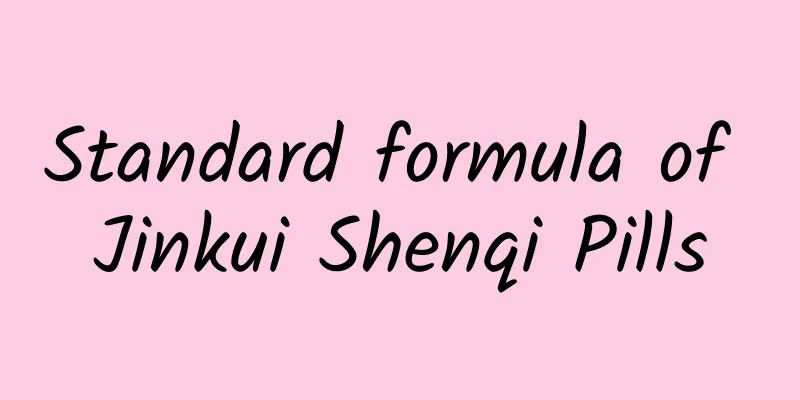What does lumbar disc bulge mean?

|
There are many different types of lumbar disc herniation, one of which is called lumbar disc bulging. However, everyone should also know that there are many reasons that lead to lumbar disc bulging. However, when many people hear about lumbar disc bulging, they don’t know what kind of disease it is. At the same time, this disease can also have a great impact on a person’s life. Next, I will introduce to you the specific meaning of lumbar disc bulging. Lumbar disc bulging is a typical lumbar disc herniation. There are many pathogenic factors. The occurrence of this bone disease has a significant impact on the patient's health and normal life. Therefore, treatment measures have become the focus of concern, and everyone hopes to cure the disease as soon as possible. So, how to treat lumbar disc herniation? Let’s take a closer look below. 1. Non-surgical treatment: Most patients with lumbar disc herniation can be relieved or cured through non-surgical treatment. The treatment principle is not to restore the degenerated and protruding intervertebral disc tissue to its original position, but to change the relative position of the intervertebral disc tissue and the compressed nerve root or partially retract it, thereby reducing the pressure on the nerve root, loosening the adhesion of the nerve root, eliminating the inflammation of the nerve root, and thus alleviating the symptoms. Non-surgical treatment is mainly suitable for: (1) Absolute bed rest When the first attack occurs, you should strictly rest in bed, and emphasize that you should not get out of bed or sit up to urinate or defecate. This will achieve better results. After 3 weeks of bed rest, you can get up and move around while wearing a waist belt for protection, and do not bend over or hold objects for 3 months. This method is simple and effective, but difficult to stick to. After remission, you should strengthen your back muscle exercises to reduce the chance of recurrence. (2) Traction therapy Pelvic traction can increase the width of the intervertebral space, reduce the intra-disc pressure, retract the protruding disc, and reduce stimulation and compression on the nerve roots. It needs to be performed under the guidance of a professional doctor. (3) Physical therapy and massage It can relieve muscle spasms and reduce pressure within the intervertebral disc, but be aware that violent massage can aggravate the condition and should be used with caution. (4) Supportive treatment Supportive care with glucosamine sulfate and chondroitin sulfate can be tried. Glucosamine sulfate and chondroitin sulfate are clinically used to treat osteoarthritis in various parts of the body. These chondroprotective agents have a certain degree of anti-inflammatory and anti-cartilage decomposition effects. Basic research shows that glucosamine can inhibit the production of inflammatory factors by spinal nucleus pulposus cells and promote the synthesis of glycosaminoglycans, a component of the intervertebral disc cartilage matrix. Clinical studies have found that injecting glucosamine into the intervertebral disc can significantly reduce lower back pain caused by degenerative disc disease and improve spinal function. Case reports suggest that oral glucosamine sulfate and chondroitin sulfate can reverse disc degeneration to some extent. (5) Epidural injection of corticosteroids Corticosteroids are long-acting anti-inflammatory agents that can reduce inflammation and adhesions around nerve roots. Generally, long-acting corticosteroid preparations + 2% lidocaine are used for epidural injection once a week, 3 times as a course of treatment, and another course of treatment can be used after 2 to 4 weeks. (6) Chemical nucleolysis Collagenase or papain is injected into the intervertebral disc or between the dura mater and the protruding nucleus pulposus to selectively dissolve the nucleus pulposus and annulus fibrosus without damaging the nerve roots, thereby reducing the pressure in the intervertebral disc or reducing the size of the protruding nucleus pulposus to relieve symptoms. However, this method carries the risk of allergic reactions. 2. Percutaneous nucleotomy/laser vaporization of the nucleus pulposus uses special instruments to enter the intervertebral space under X-ray monitoring, crush and aspirate part of the nucleus pulposus or vaporize it with laser, thereby reducing the pressure within the intervertebral disc and relieving symptoms. It is suitable for patients with bulging or mild herniation, but not suitable for patients with lateral recess stenosis or obvious herniation, or those whose nucleus pulposus has fallen into the spinal canal. 2. Surgical treatment (1) Indications for surgery: ① Patients with a history of more than three months and ineffective conservative treatment or those with effective conservative treatment but frequent relapses and severe pain; ② Patients with first attack but severe pain, especially with obvious symptoms in the lower limbs, who have difficulty moving and sleeping and are in a forced posture; ③ Patients with combined compression of the cauda equina; ④ Patients with single nerve root paralysis, accompanied by muscle atrophy and decreased muscle strength; ⑤ Patients with combined spinal stenosis. (2) Surgical method: Through a posterior lumbar incision, partial resection of the lamina and articular processes, or intervertebral disc resection through the interlaminar space. For central disc herniation, laminectomy is performed followed by epidural or intradural discectomy. Patients with lumbar instability and lumbar spinal stenosis require spinal fusion surgery at the same time. In recent years, minimally invasive surgical techniques such as microdiscectomy, microendoscopic discectomy, and percutaneous transforaminal endoscopic discectomy have reduced surgical damage and achieved good results. Since lumbar disc herniation is a common disease, many people are certainly concerned about how to treat it. Since lumbar disc herniation is a complicated condition and each patient's condition is different, the treatment measures are definitely different. When similar symptoms occur, it is best to go to a regular hospital for diagnosis and treatment. |
<<: Moxibustion cured lumbar disc herniation
>>: What to do if your legs become numb due to bulging disc
Recommend
Diet for heart disease
Heart disease is a very common disease nowadays. ...
What are the symptoms of pulmonary edema?
Pulmonary effusion is not a single disease, but a...
How to tell if you are pregnant
In life, there are many women who are pregnant bu...
Symptoms of poor gallbladder function
The gallbladder also plays a relatively important...
How to treat raised bumps left by acne?
Skin health has always been a concern for everyon...
The best exercise for cervical spondylosis
Cervical spondylosis is a very common disease. Th...
Can I eat broad beans while breastfeeding?
It is best not to eat broad beans during breastfe...
What are the treatments for cervical prolapse?
For women, the problem of cervical prolapse requi...
What kind of food is good for gastroesophageal reflux disease
When I was a child, I went to school and lived in...
What are the Chinese herbal contraceptive pills?
There are many kinds of contraceptive pills sold ...
How to Whiten Fluoride
Everyone hopes to have beautiful white teeth, but...
Why is my throat itchy and I cough?
There are many problems that are easy to occur in...
What to do if the tooth root hurts? What medicine to take?
When eating, you should avoid eating spicy and ir...
Can chloramphenicol eye drops be used in the ears?
Chloramphenicol eye drops are a relatively common...
Clinical manifestations and treatment of lumbar herpes zoster
The rash is generally unilateral and distributed ...









